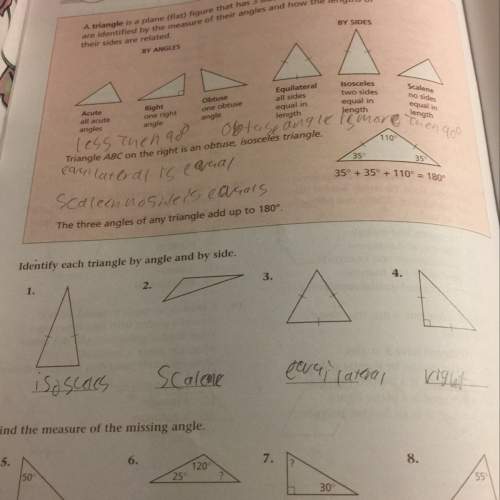
Mathematics, 04.11.2021 21:50 kolin89
For a sample of 20 New England cities, a sociologist studies the crime rate in each city (crimes per 100,000 residents) as a function of its poverty rate (in %) and its median income (in $1,000s). She estimates the following model: Crime = β0 + β1Poverty + β2Income + ε. A portion of the regression results is as follows. (You may find it useful to reference the t table.)
ANOVA df SS MS F Significance F
Regression 2 188,246.8 94,123.40 35.20 9.04E-07
Residual 17 45,457.32 2,673.96
Total 19 233,704.1
Coefficients Standard
Error t Stat p-Value
Intercept −301.7927 549.7135 −0.549 0.590
Poverty 53.1597 14.2198 3.738 0.002
Income 4.9472 8.2566 0.599 0.557
b-1. Choose the appropriate hypotheses to determine whether the poverty rate and income are jointly significant in explaining the crime rate.
multiple choice 1
H0: β1 = β2 = 0; HA: At least one βj > 0
H0: β1 = β2 = 0; HA: At least one βj < 0
H0: β1 = β2 = 0; HA: At least one βj ≠ 0
b-2. At the 5% significance level, are the poverty rate and income jointly significant in explaining the crime rate?
multiple choice 2
Yes, since the null hypothesis is rejected.
Yes, since the null hypothesis is not rejected.
No, since the null hypothesis is rejected.
No, since the null hypothesis is not rejected.
c-1. Choose the appropriate hypotheses to test whether the poverty rate and the crime rate are linearly related.
multiple choice 3
H0: β1 ≤ 0; HA: β1 > 0
H0: β1 ≥ 0; HA: β1 < 0
H0: β1 = 0; HA: β1 ≠ 0
c-2. At the 5% significance level, what is the conclusion to the test?
multiple choice 4
Reject H0; we can conclude the poverty rate and the crime rate are linearly related.
Reject H0; we cannot conclude the poverty rate and the crime rate are linearly related.
Do not reject H0; we can conclude the poverty rate and the crime rate are linearly related.
Do not reject H0; we cannot conclude the poverty rate and the crime rate are linearly related.
d. Determine whether income influences the crime rate at the 5% significance level.
multiple choice 5
Income is significant in explaining the crime rate, since its slope coefficient does not significantly differ from zero.
Income is not significant in explaining the crime rate, since its slope coefficient significantly differs from zero.
Income is not significant in explaining the crime rate, since its slope coefficient does not significantly differ from zero.
Income is significant in explaining the crime rate, since its slope coefficient significantly differs from zero.

Answers: 2
Another question on Mathematics

Mathematics, 21.06.2019 16:00
1- identificar select the category that corresponds to each term. january 23 11: 59 pm unlimited attempts remaining grade settings 276-279 vocabulary list modelo fiesta quinceañera casada adolescencia viudo juventud navidad niñez vejez aniversario de bodas divorciado madurez cumpleaños soltera
Answers: 2

Mathematics, 21.06.2019 16:40
Simplify the expression and find the missing terms. the simplest form of has in the numerator and in the denominator.
Answers: 3

Mathematics, 21.06.2019 19:30
If the ratio of sum of the first m and n terms of an ap is m2 : n2 , show that the ratio of its mth and nth terms is (2m − 1) : (2n − 1).
Answers: 1

Mathematics, 21.06.2019 22:00
(05.03 mc) part a: explain why the x-coordinates of the points where the graphs of the equations y = 4x and y = 2x−2 intersect are the solutions of the equation 4x = 2x−2. (4 points) part b: make tables to find the solution to 4x = 2x−2. take the integer values of x between −3 and 3. (4 points) part c: how can you solve the equation 4x = 2x−2 graphically? (2 points)
Answers: 1
You know the right answer?
For a sample of 20 New England cities, a sociologist studies the crime rate in each city (crimes per...
Questions

Chemistry, 04.04.2020 01:58


Mathematics, 04.04.2020 01:58


Mathematics, 04.04.2020 01:58


Mathematics, 04.04.2020 01:58






Mathematics, 04.04.2020 01:58



Mathematics, 04.04.2020 01:58

Mathematics, 04.04.2020 01:58


Chemistry, 04.04.2020 01:58




